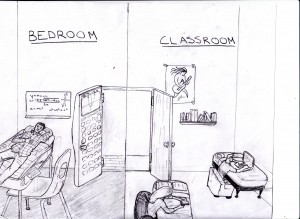
As a student, you become accustomed to a repetitive class structure that involves a lesson from the teacher. Then, you go home and write about what you learned or apply the lesson in a homework assignment. But today’s classrooms offer something more invigorating and technologically advanced to simulate students’ curiosity, and the flipped classroom experience satisfies this demand.
In the flipped classroom model, students watch lectures via video clips at home and complete homework-like assignments in class. The teacher becomes a mentor for the student, and deadlines are much more lax. Students have the opportunity to learn effective time management and either accelerate or decelerate based upon the challenge the material offers.
The flipped classroom effectively gives the student control over his or her learning while gaining the skills necessary to tackle the demands of college courses. While it’s difficult to adjust to originally, it decreases student stress because of the ease of remediating, rewatching lessons, and fixing any mistakes.
Although the flipped classroom requires some adjustment , it motivates students by enabling them to pace themselves, spread work out without feeling overwhelmed, and ask questions without feeling embarassed.
As our methods of communication change, the platforms we use to learn should shift as well. The way we learn has changed along with the types of media we use in school. With constant access to up-to-date information, the flipped classroom transforms the entire school experience to cater to the needs of its students.
